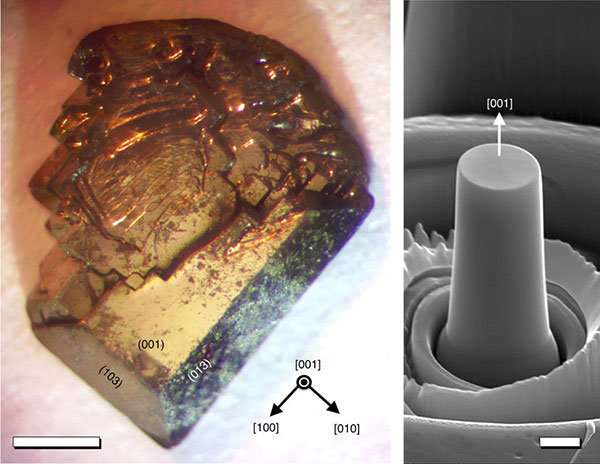Scientists discover superconductor with bounce

The U.S. Department of Energy's Ames Laboratory has discovered extreme "bounce," or super-elastic shape-memory properties in a material that could be applied for use as an actuator in the harshest of conditions, such as outer space, and might be the first in a whole new class of shape memory materials.
Shape-memory materials "remember" their original shape and return to it after they are deformed. They are commonly metallic alloys that make possible "unbreakable" eyeglass frames and quieter jet engines.
But the material in this research, CaFe2As2, is not a metallic alloy but an intermetallic more well-known for its novel superconducting properties. It has been so extensively studied that the team of researchers, from Ames Laboratory and the University of Connecticut, also made note of its high degree of pressure and strain sensitivity, and wondered about its possibilities as a structural material.
The researchers created micropillars of the material through single crystal growth followed by focused ion beam milling, and then subjected them to mechanical compression testing. They found a recoverable strain that can exceed 13 percent.
"This was a fantastic and gratifying result," said Paul Canfield, a senior scientist at Ames Laboratory, and a Distinguished Professor and the Robert Allen Wright Professor of Â鶹ÒùÔºics and Astronomy at Iowa State University. "It fully confirmed our suspicions about CaFe2As2 offering a new mode of achieving superelastic effects and greatly expands the number of materials that may offer similar or even greater behavior."
More information: John T. Sypek et al. Superelasticity and cryogenic linear shape memory effects of CaFe2As2, Nature Communications (2017).
Journal information: Nature Communications
Provided by Ames Laboratory





















